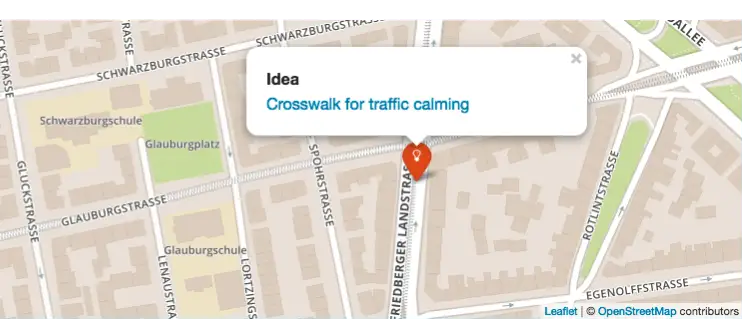7 lessons learnt in five years of citizen participation & civic innovation

For the past 5 years I have been involved in a number of web civic engagement projects. I have seen as many successes as failures, which in one way or another have always been a lesson. Certainly, so much learning has taken me to conceive one of my own projects, for example Creating Frankfurt - a citizen participation project, which I developed four years ago in Germany. This project, as in the practice, has taught me what works and what doesn't. Because of that, I can attest that there is very little information out there on evidences and references when it comes to civic innovation. A lot is just a trend or hype and few are on the quest for a sustainable and demanded citizen participation service, which is very tricky to achieve. (Hint: It is much less about technology than most believe it is).
Here are my lessons learnt:
1. No one is waiting for you
Sad, but true. Even now, in 2014, civic participation apps are still pretty much new everywhere. No one is expecting your service and that's make it pretty hard to gain an audience. The majority of people have no expectation of civic apps and do not even know of their existence. Getting people to search and find your service is the big nut to crack on. On top of that you compete with big players such as Facebook. A Facebook campaign can be done with a few clicks and it reaches to potentially millions of people. Also, target groups such as online activists, are only a fraction of users you have to aim for. Gaining critical mass is not easy since heavy social media users are just a tiny fraction of what one needs to aim for.
2. You will not be found
How can people find your service? What are the Google search queries: "Why is there no crosswalk in X street" or "Planned new Kindergartens in 2015" or "City budget for theaters" It's not like a used car portal, where people just google "used car" and many portals are waiting for them. Having a look at Google Adwords (a key word analysis tool) or Google Trends can be a real eye opener what people search for and what not. Gaining a long-term and critical mass, including all generations, through social media is not really working until today. You can drive clever campaigns and have lots of temporary participants, but long term users are mostly won over Google and not social media. So plain search engine optimization (SEO) is your friend here. I will write more on that in a future blog post.
In our Frankfurt project we only work with a region of a population of max. 1 million citizens, from which only a smaller number are interested in local political change and participation and have joined the project. We took a long tail strategy using lots of data. To be precise up to 30 thousand documents from the local municipality, which were hidden in a website. The content of these 30k documents is now fully indexed on Google and helps us gain long-term traffic and engagement on our platform.
3. Think in years and not in months
There are quick and effective campaigns through press work or on Facebook, but they mostly require a whole marketing strategy or a trending topic behind them. And then these are only peaks in your traffic, but not long-term growth in your audience to run a civic engagement service. Tom Steinberg told me that once and it helped me a lot to lower my expectations. Particular governmental administrations often misunderstand this about open government. They do nice little public relations initiatives, where citizens can raise their concerns, but rarely think about long standing citizen participation services. An amazing (unique) updated information service or something even much better can attract users in the long run, what governmental institutions are rarely able to establish. But the problem lies also on funding institutions, which have often have such a technology-driven approach. The technical development of the civic innovation app is funded, instead of a long term commitment to make a service sustainable. The result are numerous failed civic engagement apps, which might had a great potential, but never went beyond technical development.
4. You need strategic partners, although many players might see you as an "enemy"
Parties, administrations or politicians in general will probably not like you. You can innovate with far less resources much further than they can, but you will also need strategic partners: Forward-thinking people. But be aware it is a bit of a catch-22 situation. You can innovate much better outside these traditional structure, but their networks and resources can be of great help to gain momentum and a critical mass. Your project can be more sustainable if you have strong allies that give you space to innovate, but few partners are yet ready for such a cooperation. For instance, in our Frankfurt project we have a feature for citizens to add own ideas around urban development, which has led to great exchange, but since we have not achieved cooperation with the city, we cannot move to the next step to implement this ideas together with the local authorities. We have learnt that it is incredible difficult to form a cooperation, when your are outside the norm with a bottom-up project.